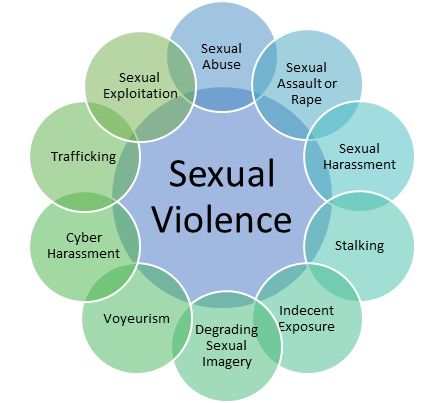Sexual Violence

Image retrieved from: https://hrdc4.org/wp-content/uploads/2020/05/sexual-violence-hp.png
Sexual violence during conflict can be divided into three overarching categories: a war tactic, widely committed with an intentional purpose; tolerated, but not specifically ordered, by leaders; and committed independently by individuals when the opportunity arises.
In a Peacekeeping Context
“Refers to rape, sexual slavery, forced prostitution, forced pregnancy, forced abortion, enforced sterilization, forced marriage and any other form of sexual violence of comparable gravity perpetrated against women, men, girls or boys that is directly or indirectly linked to a conflict.”
Perpetrator – often affiliated with a State or non-State armed group
Victim – frequently an actual or perceived member of a political, ethnic or religious minority group or targeted on the basis of actual or perceived sexual orientation or gender identity
Impunity – generally associated with State collapse, cross-border consequences such as displacement or trafficking, and/or violations of a ceasefire agreement
References:
“Conflict-Related Sexual Violence Peacekeeping.” United Nations, peacekeeping.un.org/en/conflict-related-sexual-violence. Accessed 2 May 2023.